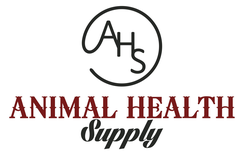We've been hearing about it for a while now, but if you are a livestock producer and you haven't taken notice now is the time to get your head out of the sand and pay attention. The FDA's new ruling on Veterinary Feed Directives (VFD) officially went active in October of 2015. The new rules went into full effect on January 1, 2017 with the period between October 2015 and January 2017 being a "grace" period of sorts to allow pharmaceutical companies to make necessary label changes and give producers, feed mills, and veterinarians some time to get things in order.
There are two main components to the new VFD rules. First, the use of medically important antibiotics (those important in human health) in food production animals should be limited to use for necessary treatment to ensure the health of the animal. The second component of the new regulation gives the responsibility of prescribing and administering medicated feed additive antibiotics to licensed veterinarians. This means that a veterinarian will be responsible for authorizing use of medically important antibiotics in both feed and water.
So, what does it all really mean? It means that a cattle producer who uses tetracyclines in feed to treat respiratory disease in calves or uses medicated milk replacer to treat calves with scours or the feedlot that uses antibiotics in their rations to control liver abscesses will now need a VFD from a licensed veterinarian to even purchase those products. And if they have operations in more than one state, they'll need a VFD for each operation from a veterinarian that practices in the same state the operation resides. In other words, a veterinarian in Illinois can't authorize a VFD for a livestock operation in Nebraska.
A veterinarian will now have to authorize any antibiotic use in the feed that involves Neomycin, Tylosin, Virginiamycin, Chlorotetracycline, and Oxytetracycline. Ionophores, coccidiostats, and bacitracin products will not be effected by this rule and will not require a VFD. That means you can continue to use products like Rumensin, Bovatec, Gainpro, Baciferm, Denegard, and Deccox without veterinary oversight.
A VFD will be required for any type of medicated feed containing a medically important antibiotic, including medicated milk replacer and mineral. All water antibiotics will require a prescription, even for label uses. The use of antibiotics like CTC in feed will require a veterinary feed directive which requires a veterinarian to have knowledge of the client's operation.
The biggest thing for producers to remember is they need to have a good relationship with a veterinarian that knows their operation. Antibiotic stewardship needs to be at the forefront of health management decisions in their livestock operations. Good antibiotic stewardship will require producers and veterinarians to work closely and make management decisions together to find alternative treatments when they can or use injectable antibiotics if appropriate. The use of antibiotics in feed will no longer be the first line of defense and use for growth promotion will be a thing of the past.
Cattle drugs currently requiring a VFD:
· Tilmicosin
Cattle drugs which change from over-the-counter sales to use only by VFD in 2017:
· Neomycin, Tylosin, Virginiamycin, Chlortetracycline, Oxytetracycline
